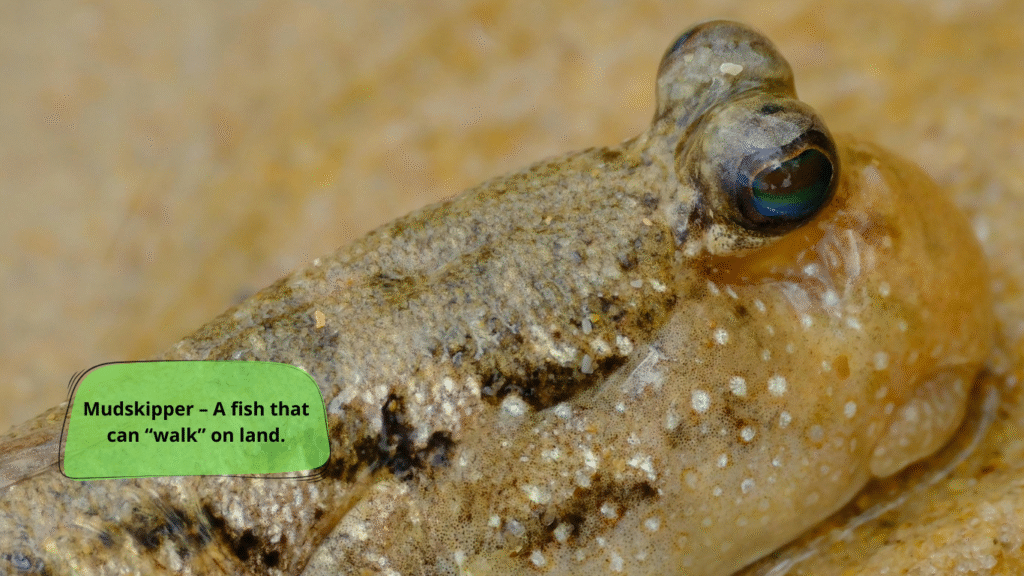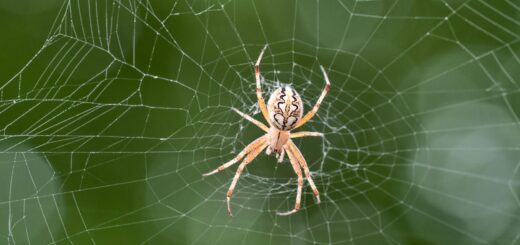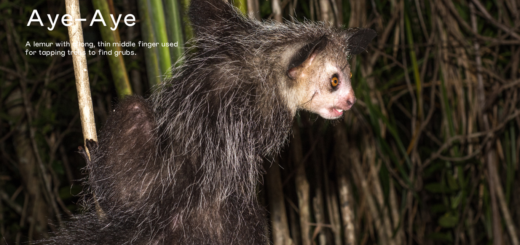Mudskippers: The Amphibious Marvels of the Mangroves
When you think of fish, the image that comes to mind likely includes fins, gills, and life underwater. But mudskippers defy every aquatic stereotype. These remarkable creatures are a unique group of fish that can breathe air, walk on land, and even climb trees. Native to mudflats, mangroves, and estuaries across Asia, Africa, and Australia, mudskippers are truly one of nature’s most adaptable animals.

What Is a Mudskipper?
Mudskippers belong to the Gobiidae family and are classified in the subfamily Oxudercinae. Unlike most fish, they spend a significant portion of their lives out of water. Their name comes from their ability to “skip” or hop across muddy surfaces using their powerful pectoral fins.
Unique Adaptations
Mudskippers are evolutionary marvels. Here’s how they survive both in and out of water:
- Air Breathing: Mudskippers breathe through their skin and the lining of their mouth and throat—a process known as cutaneous respiration. This allows them to absorb oxygen directly from the air when moist.
- Amphibious Locomotion: Their pectoral fins act like legs, enabling them to move on land, climb roots, and even leap several feet.
- Eyes on Top: Their bulging, periscope-like eyes can move independently, giving them a 360-degree view to spot predators or prey.
Habitat and Distribution
Mudskippers are commonly found in mangrove swamps, tidal flats, and brackish estuaries, primarily in:
- Southeast Asia (Indonesia, Malaysia, Thailand)
- Northern Australia
- West Africa
- South Asia (India, Bangladesh)
These environments are constantly changing with tides, making the mudskipper’s amphibious skills essential for survival.
Diet and Behavior
Mudskippers are opportunistic feeders. Their diet includes:
- Insects
- Crustaceans
- Algae
- Worms
They are also territorial and known for their elaborate mating dances and mud-wrestling displays to impress females or fend off rivals.
Why Mudskippers Matter
Mudskippers are more than just curiosities—they play a vital role in ecosystem health:
- They aerate the mud, helping plants grow.
- Serve as indicators of wetland health.
- Play a role in nutrient cycling within mangrove systems.
In evolutionary biology, they are often studied for insights into how vertebrates might have first made the transition from water to land.
Conservation Concerns
While not currently endangered, mudskippers face threats from:
- Mangrove deforestation
- Coastal pollution
- Climate change
Conservation of mangrove ecosystems is crucial for their survival and the health of many other species.
Conclusion
The mudskipper is a symbol of adaptability and evolution. With its ability to live between two worlds—land and sea—it reminds us of the incredible diversity of life and the importance of preserving our planet’s delicate ecosystems.








